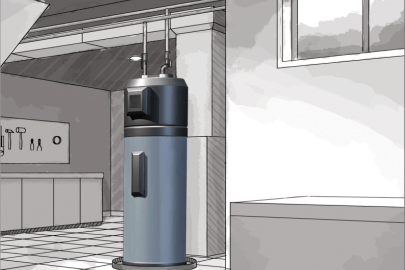We've noticed this post on What Kind of Maintenance Do Water Heaters Need? down the page on the net and decided it made sense to share it with you over here.

Hot water is necessary for daily convenience, whether it's for a revitalizing shower or washing meals. To guarantee your warm water system runs efficiently and lasts much longer, regular maintenance is crucial. This short article gives useful ideas and understandings on how to preserve your home's warm water system to stay clear of interruptions and expensive repair services.
Intro
Keeping your home's hot water system might seem overwhelming, but with a few easy actions, you can ensure it operates smoothly for many years to find. This overview covers every little thing from comprehending your warm water system to do it yourself upkeep suggestions and knowing when to contact specialist aid.
Value of Preserving Your Warm Water System
Routine upkeep not just expands the lifespan of your warm water system but additionally guarantees it runs successfully. Disregarding upkeep can bring about decreased performance, greater power costs, and also early failing of the system.
Indicators Your Warm Water System Demands Upkeep
Recognizing when your warm water system needs attention can protect against significant concerns. Keep an eye out for signs such as irregular water temperature level, strange sounds from the heater, or rustic water.
Understanding Your Hot Water System
Before diving into upkeep jobs, it's helpful to recognize the basic parts of your warm water system. Commonly, this includes the water heater itself, pipes, anode rods, and temperature level controls.
Regular Monthly Upkeep Tasks
Normal month-to-month checks can help catch minor problems prior to they escalate.
Flushing the Hot Water Heater
Flushing your water heater gets rid of debris buildup, enhancing performance and lengthening its life.
Checking and Replacing Anode Rods
Anode poles protect against corrosion inside the tank. Checking and changing them when worn out is essential.
Checking and Changing Temperature Settings
Changing the temperature level setups makes certain optimum efficiency and safety and security.
DIY Tips for Maintenance
You can carry out a number of upkeep jobs on your own to maintain your warm water system in top condition.
Looking for Leaks
Frequently check pipelines and links for leakages, as these can bring about water damages and greater bills.
Testing Stress Alleviation Valves
Examining the pressure relief valve ensures it functions correctly and prevents too much pressure buildup.
Protecting Pipes
Insulating hot water pipes decreases heat loss and can save energy.
When to Call a Professional
While DIY maintenance is beneficial, some concerns call for expert knowledge.
Complex Concerns Calling For Specialist Aid
Examples include significant leaks, electrical issues, or if your water heater is regularly underperforming.
Regular Specialist Maintenance Benefits
Specialist upkeep can consist of complete evaluations, tune-ups, and guaranteeing compliance with safety criteria.
Final thought
Regular upkeep of your home's warm water system is vital for efficiency, long life, and cost financial savings. By complying with these ideas and understanding when to look for expert aid, you can guarantee a reliable supply of hot water without unanticipated disturbances.
How to Maintain an Instant Hot Water Heater
Before tinkering with your hot water heater, make sure that it’s not powered on. You also have to turn off the main circuit breaker and shut off the main gas line to prevent accidents. Also turn off the water valves connected to your unit to prevent water from flowing into and out of the appliance. 2. When you’re done, you have to detach the purge valves’ caps. These look like the letter “T” and are situated on either side of the water valves. Doing so will release any pressure that has accumulated inside the valves while at the same time avoid hot water from shooting out and burning your skin. 3. When the purge valves’ caps are removed, you have to connect your hosing lines to the valves. Your unit should have come with three hoses but if it didn’t, you can purchase these things from any hardware or home repair shops. You can also get them from retail stores that sell water heating systems. Read the user’s manual and follow it to complete this task properly. When the hosing lines are connected, open the purge port’s valves. 4. You should never use harsh chemical cleaners or solutions when cleaning your unit. Make use of white vinegar instead. It should be undiluted and you’ll probably use about 2 gallons. 5. Now flush your water heater. This task should probably take about 40 minutes. We can’t give you specific directions for this because the procedure is carried out depending on the type, model and brand of your heater. With that being said, refer to the user’s manual. 6. When you’re done draining the unit, you have to turn off the purge port valves again. Remove the hosing lines that you earlier installed on each of the water valves. Put the valve caps (purge port) back in their respective places and be very careful so as not to damage the rubber discs that are found inside these caps. 7. Now that everything’s back in place, check your user’s manual again to find out how to reactivate your water heating system. 8. Once it is working, turn one of your hot water faucets on just to let air pass through the heater’s water supply pipes. Leave the tap on until water flows smoothly out of it. https://www.orrplumbing.com/blog/2014/september/how-to-maintain-an-instant-hot-water-heater/

Hopefully you liked our post about What Kind of Maintenance Do Water Heaters Need?. Thanks a lot for spending some time to read our short article. Make sure you pause to share this blog post if you liked it. I thank you for your readership.
Book Your Appointment